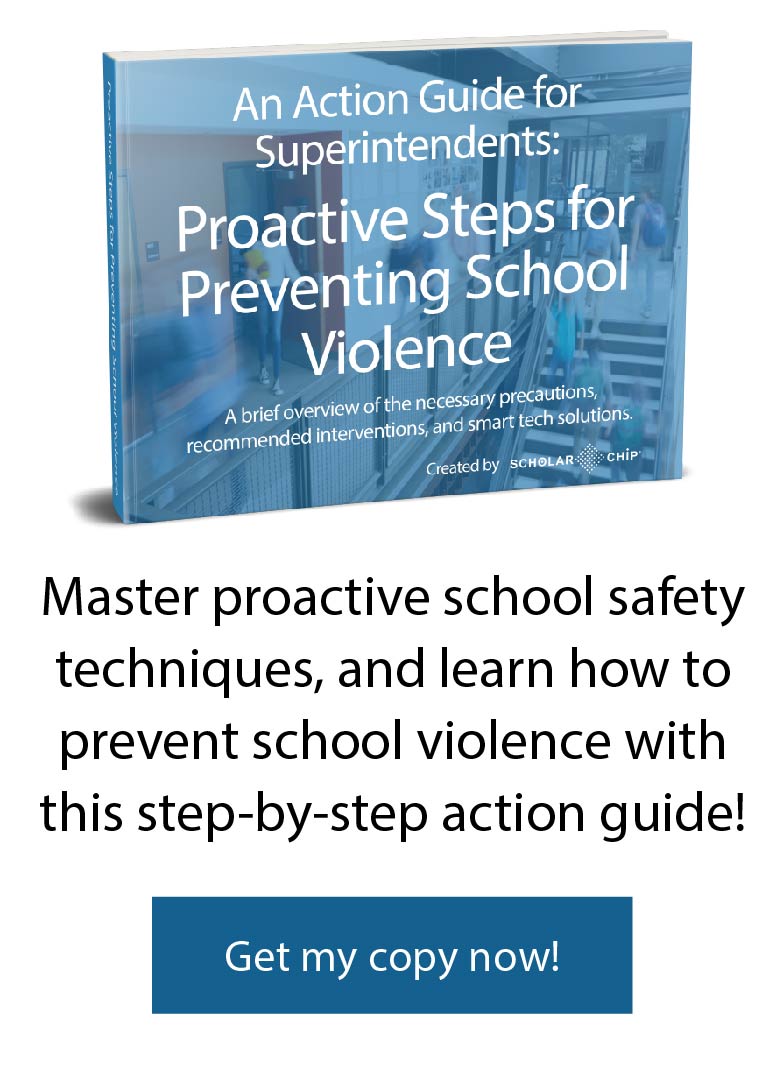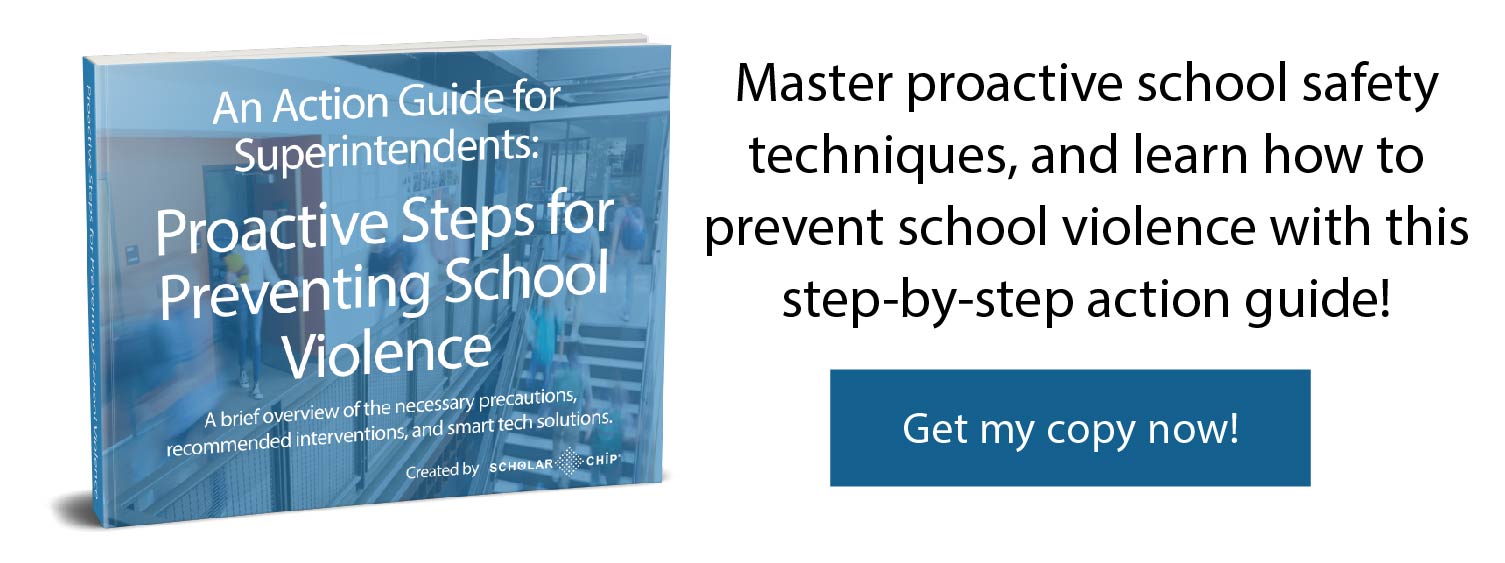Over the past few decades, American schools have made great strides toward understanding how to prevent school violence. Today’s school superintendents know that they must implement a full spectrum of tools and practices to prevent on-campus violence before it occurs. Violent acts are shockingly widespread among our schools. According to a 2015-16 report from the National Center for Education Statistics, 79 percent of schools experienced one or more violent events or thefts.
Violence creates fear and apprehension among students and teachers. When kids are scared to go to school, attendance will dip and teacher turnover will gradually rise. The Centers for Disease Control and Prevention found that in 2017, almost 7 percent of high school students skipped school at least once due to a perceived threat of violence at or on their way to school. The Brookings Institute reports that chronic absenteeism is not a new problem, and it leads to more failed classes and a decrease in graduation rates. Whether you are a superintendent, educator or parent, one thing we can all agree upon is that no child deserves to go to school in fear.
More and more principals and counselors have come to rely on behavioral monitoring tools to identify students at risk of creating violence at school. The tricky part of such a system is making it easy for teachers, leadership, and other staff to communicate their observations and concerns with each other. Without a full, clear picture of a student’s behavioral issues, nobody can step in to help before a crisis erupts. Here are a few tips about how your school can utilize behavior monitoring techniques to learn how to prevent school violence before it occurs.
Open the Lines of Communication
Behavior monitoring technology can open and streamline the communication process. A tech-based system allows staff in the school ecosystem to add documentation to a student’s file at any time. These immediate bits of data about a child accumulate in one location and keep other adults informed about student-related incidents. This cuts out the need for in-person meetings to touch base with others about student behavioral concerns. Instant feedback also equips teachers to monitor students of concern and keep their classrooms safe.
Identify Behavior Problems Earlier
Retaining all student behavior feedback in one central location allows a school counselor to identify students of concern quickly. Conducting a regular review of each child’s behavior notes gives a school counselor valuable input about which students have exhibited patterns of increasingly dangerous behaviors. And with school counselor-to-child ratios increasing all the time, they can use all the help they can get in managing their caseloads. When the school counselor can more easily give kids the support they need before they act out, he or she can slash the chance of school violence.
How to Prevent School Violence, Preventing Suspensions
An added benefit to early interventions is a reduction in suspensions. In an ideal world, each student would be in class, on time, every day. But, when a student acts out in a way that puts them or others in danger, the child must be removed from the classroom. This costs the child valuable class time. It creates a situation where the student and teacher both have to take steps backward to get the child caught up. Even in-school suspensions put the student behind. When staff, teachers or counselors can divert an at-risk student from committing a violent behavior, the chances of a suspension are reduced.
Other Methods for Preventing School Violence
What can a school do once a student has been flagged as potentially violent? Counseling, behavior coaching, and regular assessments can help. The key is to get the child to take ownership of their own emotions, learning, and actions. Tech-based tools that deliver personalized lessons and assessments to students fill that important gaps for responsive campuses. ScholarChip’s Alternative Behavior Educator (ABE) is one example of a behavior monitoring and teaching tool that kids respond to.
When a school integrates a behavioral monitoring system with their existing Student Information System, such as PowerSchool, educators and parents have access to the full picture of a student’s school experience. Referrals and interventions become an automated process, restoring valuable learning time to the classroom. Parents have access to real-time data concerning their child’s behavior. And the student is put in charge of their own behavior improvements with engaging and meaningful lessons and games. Behavioral monitoring systems are designed for all ages and grade levels, so you can rest assured that the program will meet your at-risk students’ needs.
Here’s What Can Help You Prevent School Violence at Your Campus
Now that you are aware of a few proactive tips to help you prevent school violence at your campus, it may be time to look into a dedicated all-in-one system. ScholarChip is proud to provide school safety and behavior management tools to over a thousand schools across America. Our team works hard to stay on the cutting edge of campus management technology. Get ahead of the violence before it occurs, not behind.
If you are curious to learn more about how to prevent school violence from occurring on your campus, feel free to reach out for a 1-on-1 strategy session with one of our specialists!


